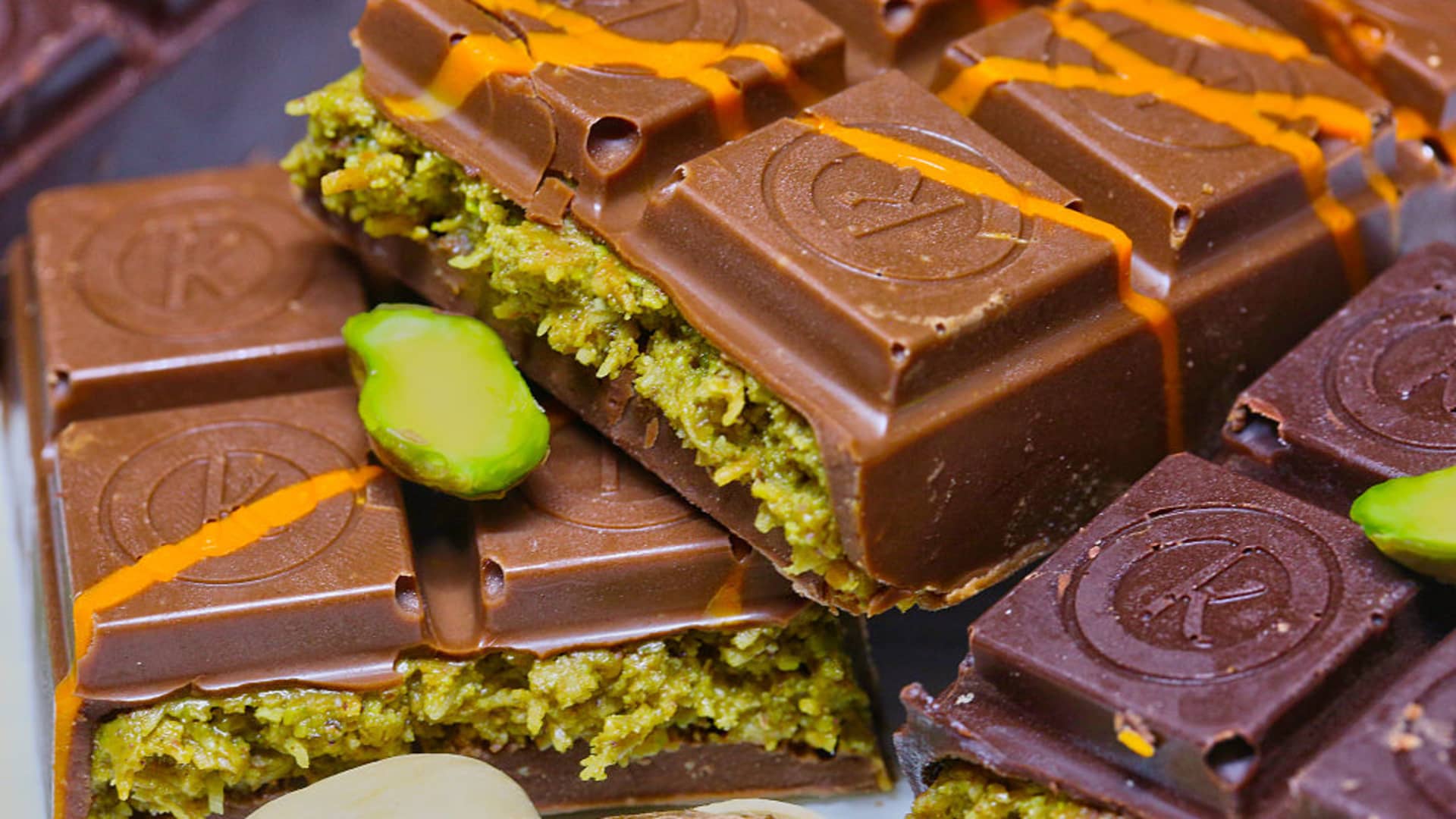Dubai pistachio kunafa chocolate bars are displayed in Maple, Ontario, Canada, on May 11, 2025.
Nurphoto | Nurphoto | Getty Images
Chocolate lovers face another run of price rises as a lag impact from the cocoa market hits retailers — but better news may be in store by next Easter.
Cocoa prices have soared in recent years, hitting record highs amid adverse weather conditions, pest outbreaks and supply tightness in West Africa, which produces around three-quarters of global supply.
That trend has combined with broader retail price inflation around the world which is pushing up costs for consumers and denting demand for sweet treats in the process. A 2024 survey by U.K. consumer group Which? found chocolate products were the category with the highest average annual inflation rate in grocery stores last year, at 11%. In the U.S., the price of popular products such as Hershey’s Kisses similarly jumped around 12% year-on-year.
Adalbert Lechner, head of Swiss giant Lindt & Sprüngli, told CNBC in April he doesn’t think cocoa prices “will ever come down to the levels where they have been before.”
Cocoa futures have remained choppy but overall eased this year, falling from $8,177 per metric ton at the start of January to around $7,855 in August. That compares with $2,374 three years ago.
And the recent decline won’t show up in chocolate prices in the near-term, according to Tracey Allen, agricultural commodities strategist at J.P. Morgan.
“We’ve got a bit of a hangover happening here,” Allen told CNBC’s “Squawk Box Europe” on Thursday.
Chocolatiers are still dealing with the heightened cocoa prices from the fourth quarter of 2024 when they saw record highs, she said.
“These heightened prices have really had this flow-on, lagged impact for the industry as a whole,” she said, with a higher cost of doing business being passed through to the consumer. “There is this ongoing deficit in the market, big depletion of availability of cocoa beans and availability of products. So higher prices for longer here, I’m afraid,” she continued.
However, the outlook may be slightly brighter in time for the busy Easter season, she noted.
Industrial demand from manufacturers is softening just as supply is improving, with production ramping up, better weather conditions and new plantings in Ecuador and Brazil reaching maturity, according to J.P. Morgan analysis, though cocoa prices are seen remaining structurally higher for longer at $6,000 per metric ton.

Tariff hit
Hamad Hussain, climate and commodities economist at Capital Economics, told CNBC that longstanding productivity challenges such as diseases and years of underinvestment in Ivory Coast and Ghana – the world’s two largest cocoa producers – mean that global supply will remain tight, even if weather conditions in West Africa improve over the coming months.
“That will keep prices elevated at historically high levels. Historically high cocoa prices could support chocolate prices,” he said.
He also noted other factors that could push up costs on both sides of the Atlantic.
In the U.K., businesses face higher costs from hikes to the minimum wage and employee contributions, which Hussain said appeared to be feeding into the price of foodstuffs including chocolate.
Meanwhile, in the U.S. he said the impact of tariffs could add upward pressure to the price of chocolate over the coming months.
“The upshot is that consumers are likely to face high chocolate prices for some time,” he said.
— CNBC’s Sam Meredith contributed to this story.






